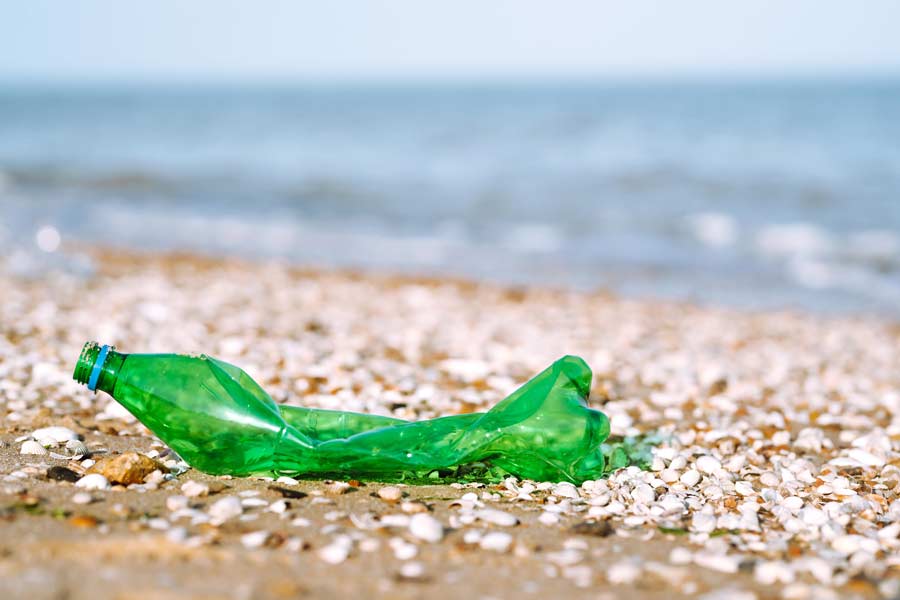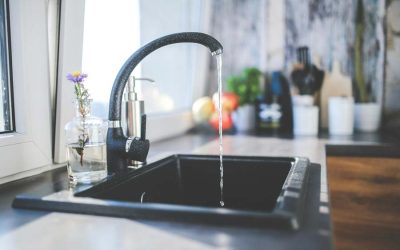
Like so many of my friends, I’ve finally taken up running. Although I’ve always exercised, I’ve not run much before. The thought of becoming a runner was daunting, so I decided to do a couch to 5km. I also signed up for a 5km fun run in October to keep me motivated.
We are lucky enough to live by the water in Melbourne. There are pedestrian-only paths along the shore that are a beautiful backdrop to my run. With spring in the air and the weather warming up, it has been a lovely way to learn to run.
We had a bit of rain and wind last week, and this morning, I noticed lots of plastic mixed in with the seaweed along the water line. This rubbish gets washed into the storm drains and ends up in the water. It got me thinking about microplastics, the food chain, hormones and our health. So this week’s newsletter is about our plastic, our environment, and how this affects our health.
Microplastics are minuscule plastic particles measuring less than 5mm in diameter, and they come from various sources, including the breakdown of larger plastic items, broken shards of plastic toys, pieces of old shopping bags, microbeads in personal care products, and even synthetic fibres from our clothes. These tiny particles are virtually everywhere, from the depths of the ocean to the air we breathe. Microplastics have become a pervasive environmental pollutant.
How do they make their way into our bodies?
Contaminated Water and Seafood – One of the most direct pathways for plastic waste to enter human bodies is consuming contaminated water and seafood. Microplastics can accumulate in marine environments, where aquatic organisms ingest them. When we consume seafood such as fish and shellfish, we may inadvertently consume the microplastics present in their digestive systems. Studies have found traces of microplastics in various seafood products, raising concerns about the long-term health effects on humans.
Airborne Microplastics – Airborne microplastics can be inhaled. Research has revealed the presence of microplastics in the air we breathe, especially in urban areas. Once inhaled, these particles can potentially enter the bloodstream and lymphatic system, although the full extent of their impact on human health is still being studied.
Contaminated Food and Beverages – Plastic packaging and containers can also contribute to the contamination of food and beverages. When plastic materials come into contact with food or drink, especially under certain conditions like heat, some microplastics can migrate from the packaging into the consumable product. A new study by researchers in South Korea and Greenpeace East Asia shows that microplastics are found in 90 percent of commercial sea salt brands.
How do they affect us?
The potential health implications of microplastic ingestion are a subject of ongoing research and concern in humans. These particles might cause inflammation, oxidative stress and could potentially disrupt cellular processes, accumulating in organs. Many plastics contain additives like phthalates and bisphenols that can mimic or interfere with the body’s natural hormones. Two studies in animals and fish have shown microplastics contributed to metabolic disorders and toxic effects in the liver.
What can we do?
The infiltration of plastic waste into the human body is a sobering reminder of the far-reaching consequences of our plastic addiction. As we continue to produce and dispose of plastic at an alarming rate, the threat to our environment and health intensifies. To address this issue, reducing plastic consumption, increasing recycling rates, and developing more sustainable packaging alternatives is crucial. By taking these steps, we can mitigate the risk of plastic waste ending up in our bodies and work towards a cleaner, healthier future for us and the planet.
Buy your products in bulk, use reusable shopping bags and containers, ditch the face washes with microplastics and buy organic material clothing!
Wishing you good health and happiness.
Warm regards,
Olivia Redfern




